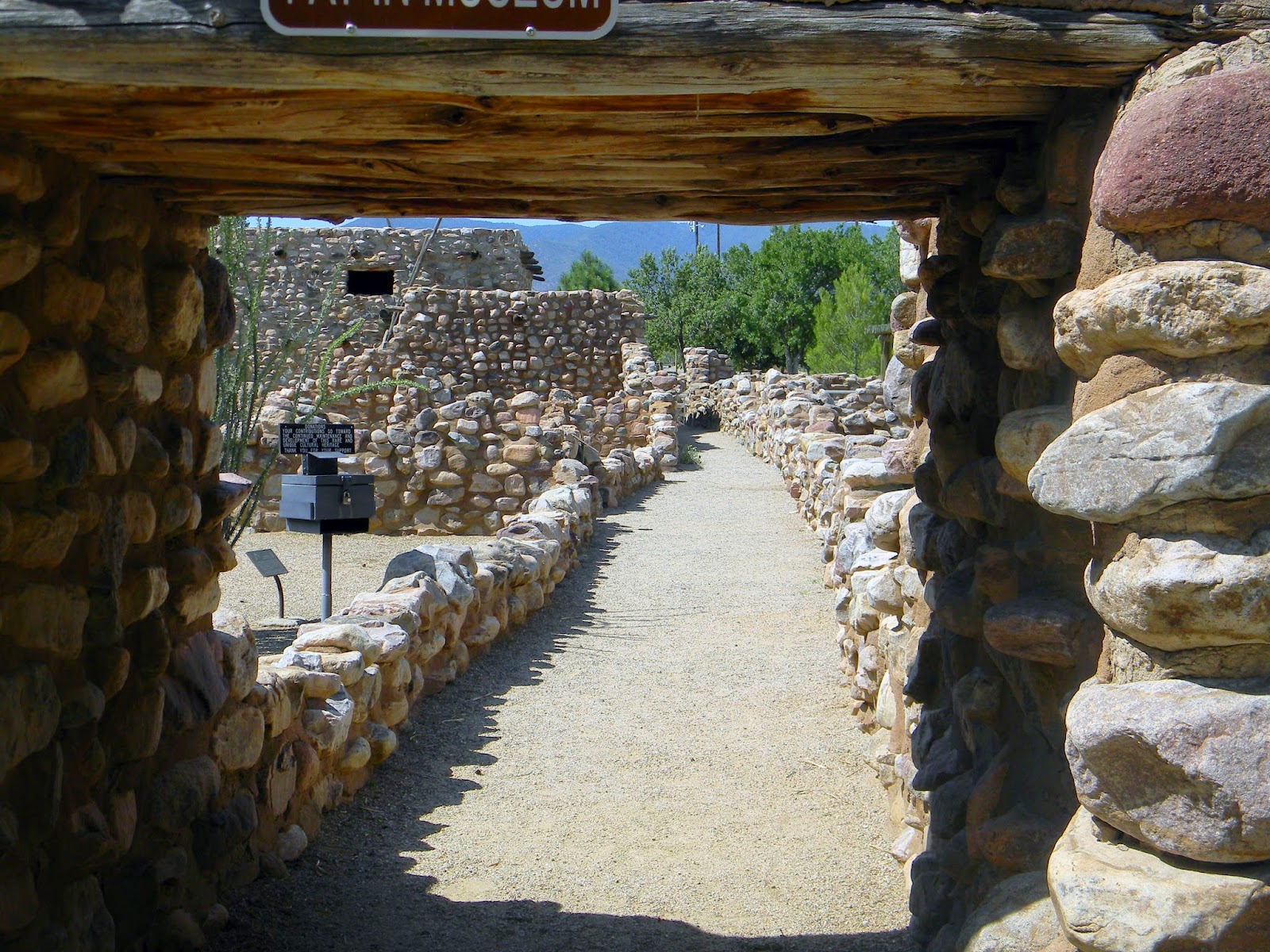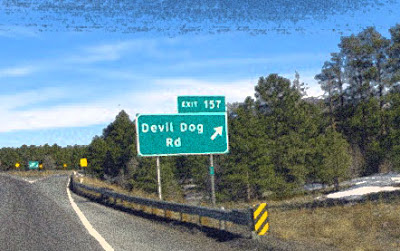Momentous Native American Ruins
I have been
lucky to visit some of the Native American ruins around the state of
Arizona. I am constantly amazed on how
the remnants of these communities have stood the test of time for thousands of
centuries. The Hohokam, Salado, Sinagua,
and other ancient tribes build these places from the materials found in the
areas where they lived. They used trees,
sandstone, clay, cobblestones, and sand to inforce their massive walls. These places are worth a visit and make you
feel like you have walked back in time.
BESH-BA-GOWAH
ARCHAEOLOGICAL PARK
The Besh-Ba-Gowah Archaeological
Park is located on the outskirts of Globe, Arizona, and only a mile and a
quarter from its historic downtown. It is an old pueblo ruin and is
approximately 700 years old. This remarkable site’s skeletal remains are well
preserved for all who visit and want to take a walk back in time. The history of this place takes us as far
back as the 13th century when many Native American dwellings were
built in this area along the Pinal Creek. The region was ideal for these
settlements to thrive with the abundance of water, the large assortment of
desert foliage, and the perfect weather for growing crops almost year round. The structure of this community was built as a
defense mechanism against enemies or other dangers to those who lived there.
The entrance was through a narrow corridor with no openings to view the
outside. The passage takes you between the dwellings to the central plaza where
ceremonies were held and many of the dead were buried. The walls were
constructed of sand, clay, large stones and are several inches thick. Each
building was two or more stories high using the ground level for storage while
the families lived in the upper levels. It was believed the Salado Indians were
a highly developed group of people with remarkable abilities to create
utensils, decorative pottery, and colorful cotton cloths. The many
extraordinary desert plants that surround the structures were used by this
pre-Columbian tribe for food, construction materials and dyes.
MONTEZUMA
CASTLE
Montezuma
Castle is tucked in the mountains and located just outside Sedona in the Verde
Valley. The cliff dwelling got its name because the building’s foundation
resembled an Aztec lodging. The remarkable structure was built by the southern
Sinagua people in the 12th century. Sinagua is Spanish for “without water”.
They used limestone to build their abode, which is a soft material causing
varying breakage over a long period of time. Because Montezuma Castle is wedged
tightly inside the rock cliffs, it has been protected by the elements and has
remained intact for over 600 years. For that reason, this historic monument is
one of the most successfully preserved early ruins in the southwest. The five story dwelling with its 20 rooms is
about 100 feet above Beaver Creek which was used as their water source. It was
speculated that they built the structure high in the mountains because the spot
offered protection from the desert elements and their enemies. Below the cliff
lodgings and along the base of the rock face, sits Castle A. This structure was
also constructed of limestone and is almost completely gone from being worn
down by time and the difficult Arizona weather.
Tonto National Monument
Despite the
fact they were constructed in the 13th to early 15th centuries, the cliff
dwellings are in remarkable condition. The people who occupied the Lower and
Upper rock habitats were farmers and hunters who feasted off the local animals
and vegetation. They created colorful pottery and wove complex patterns on
fabric which can be found around many places around the Southwest. You will
also be treated with a Visitor Center museum on the premises with many of their
items on display, models of the dwellings, and a history of the people who once
called this place home.
Walnut Canyon National Monument
The rock
apartments located in the cliffs 7.5 miles east of Flagstaff were built as far
back as the 1100s. Like many of the other Native American ancient sites, the
Sinagua people originally lived in these dwellings. In typical Sinagua fashion,
they mysteriously disappeared sometime in the middle 1200s, and left their
homes abandoned. The monument has been maintained by the U.S. National Park
Service and has a couple of trails which takes you to the ruins. The Island
Trail is a one mile paved trail to several dwellings where you can walk through
the tiny rooms. This trek will take you an hour to accomplish. The Rim Trail is
half the time and presents you with breathtaking views of the canyon and an
area to sit near the rim and enjoy the scenery. The ruins are merely only part
of what you will see when you visit the park. Walnut Canyon National Monument
has a picnic section, a visitor center with a bookstore and all kinds of
artifacts on display which were found during excavation of the ruins.
Navajo National Monument
This Anasazi
cliff dwelling has two sizeable rock living spaces known as Betatakin and Keet
Seel. Maintained by the U.S. National Park Service and present you with three
self-guided rim trails (Sandal, Aspen and Canyon View) that offer splendid
views of the entire area. The Betatakin guided tour is free and is a 5 mile
trek. On this 3 to 5 hour round trip excursion you will visit the 135 room rock
face apartments wedge deep in the cliffs. The Keet Seel jaunt takes you to the
160 room dwelling and is a 4 to 6 hour trek each way.
Canyon de Chelly National Monument
Just about
210 miles northeast of Flagstaff sits another Anasazi cliff dwelling ruins.
These were also constructed from 1100s and 1300s. These sacred lands are deep
inside the Navajo Nation and maintained by the inhabitants. The Navajo people are willing to allow guest
to walk their lands, but not all places are accessible to the populace. Those
who want to take a self-guided tour of the area have three choices to make.
There are two paved picturesque roads to the south and north rims and a
magnificent view of the canyon. The other trek is 2.5 miles on the White House
Ruins Trail and slopes down 600 feet to the bottom of the canyon.
TUZIGOOT
Another
group of southern Sinagua people established their own community on the
hilltops of the Verde Valley and other locations around the state. One of these
places is Tuzigoot which is Apache for “crooked water”. These ruins are located
20 miles from Montezuma Castle and stretches along a crest above the Verde
Valley. Tuzigoot was built from the natural resources found in the surrounding
desert. Its massive cobblestone walls were uneven, two-story to three-story
dwellings, with approximately 110 rooms. There were a limit number of exterior
doors and windows. The Sinagua would enter through a hole created in the roof
of each pueblo. Living high on a hilltop in their rock apartments, they were
well protected from the unforgiving desert climate and their enemies. A small group of Sinagua first lived there
for hundreds of years until the 1200’s when the number of residents grew
immensely. More rooms were added but the people kept coming. Many of the farms
outside the settlement were experiencing drought from a lack of water. Having
nowhere else to go, they sought shelter amongst the cobblestone walls of
Tuzigoot.
Casa Grande Ruins National Monument
Casa Grande Ruins National Monument is located one hour
southeast of Phoenix in Coolidge. These well preserved remains are where the
ancient Hohokam once lived. The main building, or Great house, is four stories
high and 60 feet long. The first floor is on a mount and the walls are a
mixture of a concrete-like combination of sand, clay, and calcium carbonate or limestone.
The Great House took 3,000 tons of Caliche mud which was layered resulting in
the walls being four feet thick at the base and tapered towards the top.
Anchored in the walls and used to form the ceilings were hundreds of juniper,
pine, and fir trees they carried or floated 60 miles down the Gila River. The walls of the Great House face the four
cardinal points of the compass and a circular hole in the upper west wall
aligns with the setting sun at the summer solstice. The other holes in the
walls each lined up with the sun and moon at specific times. It is a great
mystery to why the Hohokam built this structure to those exact measurements.
They were spiritual people who were often thankful for all the gifts nature
gave them. Each night, the entire community would gather in the Great House and
watch the setting sun through the small hole in the upper west side of the
building. Surrounding the Great House
were many other structures. These buildings were where the families of the
village once lived. The walls were two to three feet thick and also formed from
the same mixture which was used to construct the Great House. The open spaces
were used for recreation and a market area where they sold their handmade
goods. They also dug pits which were used as ball courts for playing games and
having gatherings.
Wupatki Ruins
Wupatki
Ruins are located east of Flagstaff, near Sunset Crater Volcano, and are the
ruins of the farming community of Wupatki (wuh-POT-kee). This community was built at some time amid
400 to 1700. The unique settlement was
able to thrive even with the scarce water supply and harsh weather. Wupatki was self sustaining with a mix of
Sinagua, Chohonina, and Kayenta Anasazi cultures trading and working together
to build a successful community. The
homes were constructed with sandstone, limestone blocks, and chunks of basalt
set with a clay-based mortar. The
residence ranged from single-story one family dwellings to multi-level high
rises with over 100 rooms in each. These
sturdy structures have withstood the test of time throughout all the vandalism
and unpredictable weather for over 700 years.
Surrounding the homes are a couple of circular formations. One of the structures was a community room
where the people gathered from time to time.
The other circular structure was a ceremonial ball court. Many believe this also served as a watering
hole when their water supply had become scarce.
Wupatki was full of life until the surrounding lands made it impossible
to survive.















Comments
Post a Comment